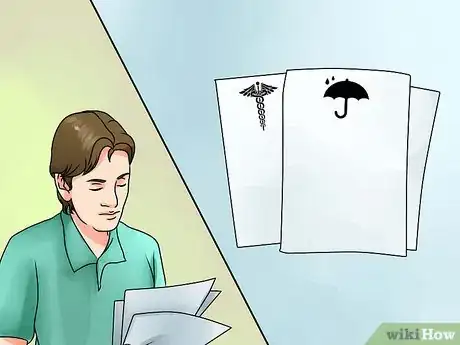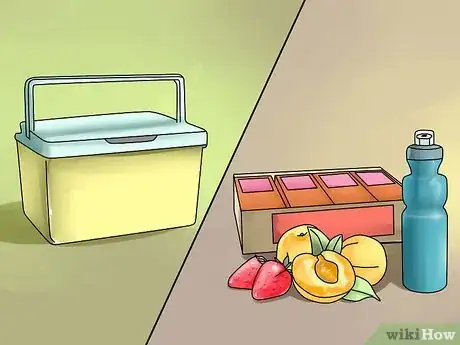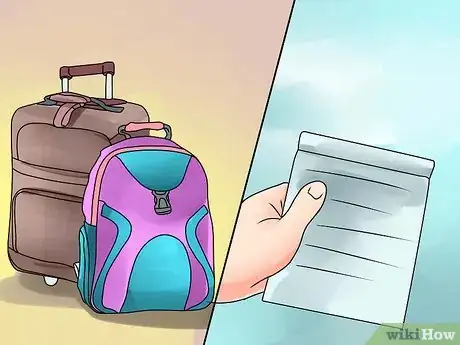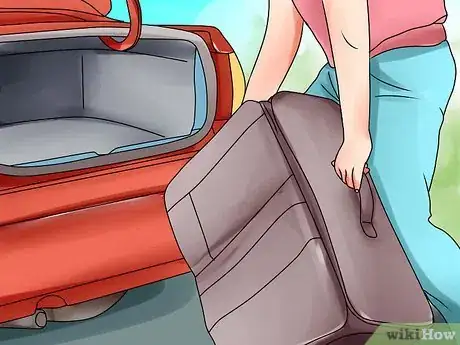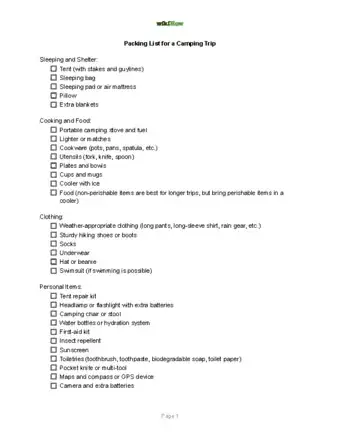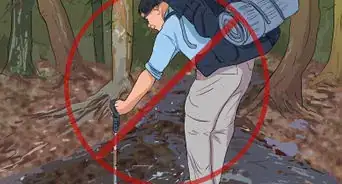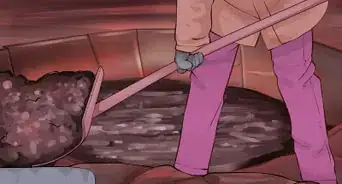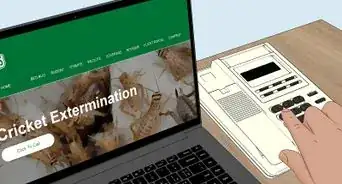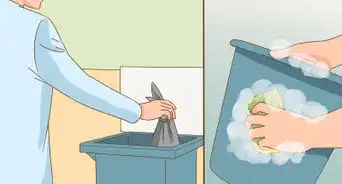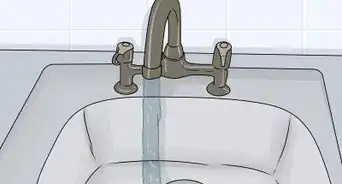This article was co-authored by Hannah Young. Hannah Young is an Outdoor Education Expert with more than three years of experience. She specializes in educating others on backpacking and hiking, land ethics and best practices, and wilderness Restoration. Hannah earned a BS in Earth Systems from Stanford University.
wikiHow marks an article as reader-approved once it receives enough positive feedback. In this case, 100% of readers who voted found the article helpful, earning it our reader-approved status.
This article has been viewed 226,850 times.
Camping is a fun and exciting experience, but to stay organized and safe, you must prepare for the trip.
Steps
-
1Decide with whom you are camping. If it is just you or your family, the next step is not quite as important. However, if you are taking a scout troop or a group of friends, read the next step carefully.
-
2Make sure you get insurance information and health information before you do anything else. If someone is injured on the trip, the insurance information will make a huge difference in the care they receive.[1] Health information is very important in planning the trip, for example, you cannot pack peanut butter if your friend is allergic to peanuts. If someone who is coming needs routine medication, make sure they have it. If they wear glasses or contacts, make sure they have a case, saline(contacts only)and/or a spare pair of glasses.[2]Advertisement
-
3Set up a first aid kit. If you are not sure what to put in it, read "Things You'll Need". You should also teach yourself general First Aid.
-
4Decide how long you will stay and figure out where you will be sleeping. If you do not know this, you will go through the trouble of purchasing and packing a tent when you were supposed to sleep in a cabin.
-
5Pack an appropriate amount of food: Enough for three meals and an optional snack per day. Try not to pack too many perishable food items, like cheese, chicken, and milk. Basically, try to avoid dairy products and meat, because they can make you sick if you eat them when they go bad.[3] Trail mix is great for snacks, fruit for breakfast, crackers for lunch, and leftovers for dinner. Also, remember to pack lots of water.
- Try sticking with dehydrated foods that can easily be prepared with boiling water. This way, you can make a “home-cooked” meal over the campfire.
-
6Gather all of the other things on the "Things You'll Need" list and try to pack them in a small, lightweight bag. You can put smaller items in a backpack or rolling suitcase and the larger items like your sleeping bag can be carried in a garbage bag. They are great for carrying and can be folded and stubbed into a small space until needed.
-
7Don't over pack.
-
8Load everything into your car and hit the road!
Packing List for a Camping Trip
Community Q&A
-
QuestionWhat if the weather changes?
 Community AnswerCheck the weather once every day before the trip. If you are already packed, pack for the weather that day too, and have an escape plan if needed.
Community AnswerCheck the weather once every day before the trip. If you are already packed, pack for the weather that day too, and have an escape plan if needed. -
QuestionI'm going camping at Pyramid Lake, and last time I went camping there, it was freezing. What should I bring to help me not freeze to death at night?
 Community AnswerThere are sleeping bags made to suit specific temperatures. Find out what the overnight temperatures will be there and get yourself the right sleeping bag. A tarp between you and the ground will also help.
Community AnswerThere are sleeping bags made to suit specific temperatures. Find out what the overnight temperatures will be there and get yourself the right sleeping bag. A tarp between you and the ground will also help. -
QuestionWhat if I get sore legs and feet while I'm hiking and I don't don't have a first aid kit?
 Community AnswerSore muscles cannot be fixed by anything in a first aid kit. Sit and stretch, and drink water to keep your muscles from dehydrating. If you have blisters, try to fold your socks to add another layer between your skin and shoes.
Community AnswerSore muscles cannot be fixed by anything in a first aid kit. Sit and stretch, and drink water to keep your muscles from dehydrating. If you have blisters, try to fold your socks to add another layer between your skin and shoes.
Things You'll Need
-
In General
- Enough food for three meals and one snack (opt.) for every day you stay.
- Sleeping bag(s)/airbed
- Extra blanket(s) (If you are camping in the cold)
- Sharp Knife
- Poncho (in case it rains)
- Tent (If you are not sleeping in a cabin)
- Tarpaulin
- Stakes for the tents
- Water bottle
- Compass
-
Appropriate clothing:
-
For Cold Weather
- Tennis shoes
- One pair of jeans or sweatpants per day
- Jacket
- Long-sleeved shirts
- Socks (pack extras)
- Gloves/mittens (for really cold weather)
- Hat/cap (for really cold weather)
- Snow boots (for extremely cold/snowy weather)
- Appropriate sleepwear
-
For Warm Weather
- Flip-flops (opt.)
- Tennis shoes
- Sunglasses (opt.)
- Visor/Baseball cap
- Short pants and/or jeans
- Swimsuit (If you plan to swim, sail, canoe, etc.)
- A T-Shirt or comfortable top for each day
- Socks
- Appropriate sleeping clothes
-
For Cold Weather
- Sunscreen
- Bug spray
- Personal items
- Books and/or games for rainy days
- Trash-bags
- Toilet paper (if not provided)
- Soap & Shampoo
- Paper towels
- Zip-lock bags
- Flashlight(s)/Lantern
- Extra batteries
- Pillow
- Comfort pad or air mattress (opt.)
- Stuffed animals (opt.)
- Large cooler (for food)
- Duct tape
-
For the First Aid Kit
- Antiseptic wipes
- Adhesive dressings (plasters)
- Bandage Wrap
- Bug Spray
- Painkillers
- Anti-itch Cream
- Inhaler (if one of the participants has asthma)
- Matches
- Tweezers (in case someone gets a splinter or sticker)
- Whistle
- Mirror (to signal for help, if needed)
- Bandanna (These are useful in almost any situation)
- Ponytail holders (These can be used for more than hair)
- Small amount of fresh water (for thirst, or if someone has something in their eye)
- "Feminine" items (for female participants)
- Tissues
- Any personal medicine

